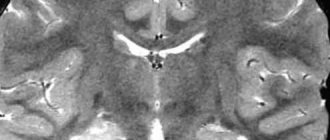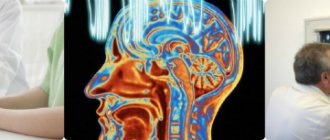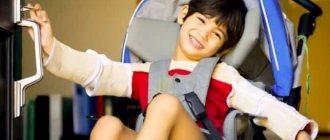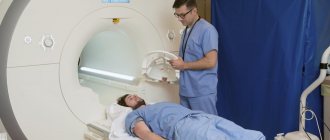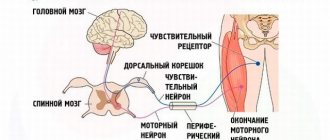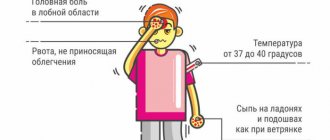Causes of disability
As noted above, epilepsy is part of a group of neurological disorders in the functioning of the brain and is accompanied by specific seizures. And although epileptic seizures are not a necessary phenomenon, when they occur the patient is not able to be responsible for his actions, and may not even deliberately cause harm to himself (for example, in the event of an unsuccessful fall, etc.).
It is noteworthy that outside of seizures, the life of an epileptic does not have any restrictions and is quite ordinary. For this reason, many do not seek special status. The need for it arises only in those whose seizures are quite frequent and dangerous, including for others. Then you need to go through the ITU and establish the degree of restrictions with a specific group.
It is relevant to assign preferential status if the patient has to:
- work as a vehicle driver;
— carry weapons, come into contact with radioactive and chemical substances;
- use complex mechanisms, be at heights, under water, etc.
ITU experts prohibit these types of activities if epilepsy manifests itself quite clearly and has led to persistent disorders of body functions.
In particular, disability is established if, during the period between epileptic attacks, it is necessary to:
- regularly undergo medical examination and examination;
- take medications that have side effects.
According to experts, disabled epileptics may experience behavioral disorders, mental disorders, intellectual degradation and visible manifestations of epileptic disease on the face.
Important
! To establish a special status for adults with epilepsy, it is important to document seizures.
Disability in epilepsy and criteria for its assignment
A person who has undergone a medical examination can be assigned 3 groups. The purpose depends on the extent to which body functions of general importance are impaired due to the presence of the disease in question. The following groups can be issued:
First. The disease is in a progressive stage, including attacks appearing very often, there is a sharp decline in vital activity, and the development of dementia.
In this case, if there are no positive results from the rehabilitation therapy carried out within five years, the patient is given a certificate indicating permanent disability.
- Second. Limitations on life activities are significant. Seizures occur frequently, and the changes that occur to a person are pronounced. The patient is advised to work from home, as performance is significantly reduced.
- Third. Refers to those situations where a person’s life activity is limited to a minor extent. Seizures occur rarely, have a short duration, and the patient’s personality is subject to minor changes. Return to work occurs after completing a course of treatment.
If attacks of the disease do not affect a person’s quality of life in their absence, then the patient is recognized as disabled, provided that seizures that are sudden in nature may pose a danger to the people around the patient.
These include:
- People working with vehicles, if their sudden stop would result in a danger to others. These include railroad switchmen, public transport drivers, and aircraft dispatchers.
- Persons carrying out labor activities with mechanisms of varying complexity, at heights, near water or with fire. In this case, seizures can directly threaten the life and health of others.
- Employees interacting with chemicals that ionize radiation, with securities, and weapons. If done incorrectly, irreparable damage can be caused.
Degrees of impairment of body functions in different groups
When deciding on the issue of disability, the characteristics of seizures and their duration are taken into account. If a person is unable to work in his profession, he is declared disabled and given the right to retraining. A person is recognized as disabled if between seizures the quality of life is impaired, associated with:
- the need to take medications every day that have anti-epileptic value and have side effects;
- constant supervision by a doctor;
- examinations carried out regularly.
The disease can be accompanied by complications of varying degrees, which happens over a long period.
A person is recognized as disabled if, due to illness, mental defects, behavioral disturbances, degradation of intelligence, or the appearance of epileptic character traits occur.
If complications associated with impaired motor function occur, disability is also established.
The main seizures that affect the recognition of a person as disabled include:
- impact on mental health and intelligence;
- frequency and severity of attacks (taking into account whether the patient loses consciousness or not);
- delays in psychomotor and physical development (relative to children);
- presence of motor dysfunction;
- how effective is the therapy;
- history of status epilepticus;
- brain activity, which is checked using EEG;
- presence of neurological symptoms;
- cause of the disease;
- age when the disease was diagnosed;
- presence of side effects from treatment.
Procedure
A person wishing to receive disability due to epilepsy must act:
- Receiving a referral to undergo the ITU. You can obtain the document from a neurologist who observes the patient at his place of residence.
The main reason for visiting a doctor is progression in the development of the disease, loss of performance due to personality changes, as well as mental disorders. You can apply for a referral to the social security office in your locality.
- Passing a medical examination. The patient undergoes tests prescribed by the doctor, undergoes additional studies, and receives a conclusion from a psychologist.
Disability registration process
- The commission studied the changes that occurred in mental development and the characteristics of the nature of the disease. A conclusion is made about whether the person has the opportunity to continue working.
- Issuance of a certificate confirming the status of a disabled person. Occurs if the commission makes an appropriate decision.
Then, over the course of one month, specialists conducting MSE develop a program according to which the patient undergoes rehabilitation. After development, the document is submitted to the social security authorities. Upon completion of this procedure, a person has the opportunity to apply for a pension.
Documentation
A person applying for disability must collect a package of documents, which includes:
- referral from a doctor for medical examination;
- research data;
- medical documentation confirming the presence of the disease;
- results of tests that were prescribed;
- To assign a pension, a certificate issued by ITU on the status of a disabled person is required.
Passing the ITU
The doctor issues a referral to a person for medical examination if:
- attacks are frequent and severe, which disrupts a person’s life;
- the type of professional activity is contraindicated for the employee, since seizures threaten others;
- epilepsy becomes more complicated.
Scheme for the provision of public services for conducting MSE
The decision to assign disability is not made in relation to patients who:
- no complications are observed;
- have attacks that occur rarely and in a mild form;
- can be transferred to another position and continue their normal life;
- work activity does not create a danger to others during a seizure;
- are in remission.
List of examinations and analyzes
The patient will be examined by specialists and, based on the data obtained from tests and studies, a conclusion is drawn about the possibility of assigning disability. A person undergoes research:
- takes an EEG;
- X-rays of the skull are taken;
- the fundus and visual fields are examined;
- urine and blood analysis;
- MRI or CT tomography is performed;
- psychological testing;
- if necessary, examination of other doctors.
The results obtained are announced in the presence of all members of the commission.
Drawing up an act and issuing certificates
The result of the examination is an act according to which the person will be recognized or not recognized as disabled. If a disability is established, a certificate is issued indicating the person’s status and the assigned group. The certificate also specifies the rehabilitation program that has been developed.
An example of an extract from an act issued by the commission:
Extract from the act
Help example:
Certificate of disability
The rehabilitation program is filled out using this form:
Form of an individual rehabilitation program for a disabled person
What laws govern
Now let’s look at the regulations that regulate the procedure for establishing status at the state level, these are:
— Federal Law of November 24, 1995 No. 181-FZ (as amended on October 30, 2017) “On the social protection of disabled people in the Russian Federation”;
— Decree of the Government of the Russian Federation of February 20, 2006 No. 95 (as amended on August 10, 2016) “On the procedure and conditions for recognizing a person as disabled.”
It is also worth highlighting the following Orders of the Ministry of Labor and Social Protection of the Russian Federation:
— dated October 11, 2012 No. 310n (with additions and amendments dated December 29, 2020) “On approval of the Procedure for the organization and activities of ITU federal government institutions”;
— dated January 29, 2014 No. 59n “On approval of the Administrative Regulations for the provision of public services for conducting MSE”;
- dated August 27, 2020 No. 585n “On classifications and criteria used in the implementation of medical and social examination of citizens by federal government agencies of the ITU.”
Types of epileptic seizures
There are two main types of seizures:
- Partial . They occur most often. They begin when a focus of increased electrical excitability forms in a certain area of the brain. The manifestations of an epileptic seizure depend on the part of the brain in which the focus occurs. The person remains conscious, but may not control part of the body, he may experience unusual sensations, and in difficult cases he may lose orientation in space and stop responding to external stimuli. At the same time, he can carry out the action started before the attack: walk, smile, sing, etc. A partial attack can turn into a generalized one.
- Generalized causes loss of consciousness. The person completely loses control over his actions. These attacks are caused by excessive activation of deep parts with further involvement of the entire brain. This condition does not necessarily lead to a fall, because Muscle tone is not always impaired. An attack begins with tonic tension of all muscle groups, which can lead to a fall. This is followed by clonic convulsions, during which flexion and extension movements of the arms, legs, head and jaw movements begin. In children, generalized seizures can manifest as absence seizures. The child freezes in place, his gaze becomes unconscious, and twitching of the facial muscles can be observed.
All attacks last 1-3 minutes. After them, a person feels weak and drowsy. The patient may not remember the onset of the attack. Seizures begin spontaneously, so people with epilepsy should not drive a car, work with electricity, or work at heights.
Also, with such a disease, you cannot work with weapons, chemicals or gas.
What features may arise
Children will be examined in the same way as adults, only parents are present with minors during the examination. But children with disabilities are given the status of “disabled child” without a group. A certain category is established from the age of 18 based on the results of the adult ITU.
We also note that permanent rehabilitation is recommended for disabled epileptics, regardless of age, since their disease cannot be treated and requires lifelong medication. And therapy helps to suppress the centers in the brain that are active in the disease in question. Plus, psychological rehabilitation is almost always required to overcome complexes and pressures caused by conditions.
To summarize, we note that in Russia, according to statistics, every hundredth person has epilepsy, and men face this problem more often than women. Be that as it may, against the background of the disease, many are given group 3, and only 1% of disabled people with epilepsy have the most severe category 1.
Falling sickness leading to disability
In most cases, epilepsy is a congenital disease and its first signs appear in childhood and adolescence.
In patients, the threshold of brain excitability decreases, but there is no damage to the brain substance. Only changes in the electrical activity of nerve cells can be observed. This type of epilepsy is called primary (idiopathic). It is treatable, has a benign course, and with age the patient can completely stop taking pills.
Secondary (sympotmatic) epilepsy develops if the brain's metabolism is disrupted or there is damage to its structure.
These changes occur due to various pathologies:
- underdevelopment of brain structure;
- received traumatic brain injuries;
- past infectious diseases;
- due to strokes;
- in the presence of tumors;
- as a consequence of alcohol and drug addiction.
This form of epilepsy can appear at any age. It is difficult to treat, but if you cope with the cause of the disease, you can get rid of epileptic seizures forever.
Causes, types and symptoms of the disease
The causes of epileptic seizures are not completely clear today. Presumably, epilepsy attacks are associated with the structure of the membrane of brain cells (including their chemical characteristics). And based on their occurrence, epilepsy is divided into 3 groups:
- Idiopathic occurs in the presence of a genetic predisposition. However, there are no structural changes in the brain.
- Symptomatic, doctors name structural defects of the brain (tumors, cysts, malformations, hemorrhages, etc.) as a possible cause.
- Cryptogenic in this case, it is not possible to identify the true cause of the disease. This form of epilepsy is diagnosed in approximately half the cases of the total number of patients.
An attack can also be triggered by infectious diseases affecting certain parts of the brain, vascular pathologies, cancer, liver and kidney dysfunction, high blood pressure, toxicosis during pregnancy and Alzheimer's disease.
As for symptoms, they can be quite varied. These include the following manifestations:
- The presence of an extensive convulsive seizure, accompanied by a scream and a fall with loss of consciousness.
- At the same time, convulsions occur, during which the torso and limbs tense and stretch, and the patient throws his head back.
- The veins in the neck swell and breathing stops (for a few seconds or more).
- Under the influence of convulsions, the jaws tighten and the skin becomes deathly pale.
- Jerky twitching of the muscles of the trunk, neck and limbs occurs.
- Subsequently, breathing becomes hoarse and noisy (because the tongue sinks and saliva accumulates in the mouth).
- Slight body chills and headache may be present.
- The mouth produces a small amount of foam, sometimes with blood (due to biting the tongue or cheek).
- At the final stage of the attack, the muscles relax. During this period, the patient has no reaction to external stimuli (in particular, dilated pupils do not react to bright light).
- Sometimes involuntary urination occurs.
Note ! A couple of days before the attack, a person feels unwell, irritable and headaches and at the same time complains of poor appetite and insomnia.
Why are they refusing to assign status?
Those citizens whose illness has not led to a significant loss of important functions may be refused status. If the disease has a mild course, attacks are weak and rare - this is a legitimate reason for refusing to assign a group.
The opportunity to continue working, undergo retraining and move to another job is also taken into account. If, as a result of treatment, a stable remission occurs, the group may be removed.
How to challenge a refusal
You can challenge the commission’s decision at the regional or main office of the bureau. To do this, you must draw up a statement expressing your disagreement with the refusal received.
Application example
Within a month, a re-examination will be carried out and a new conclusion will be issued. If it was not possible to challenge the decision in this way, all that remains is to go to court. The court's decision is final and cannot be appealed. If the judge believes that the patient does not need to receive status, there will be no chance to change the situation.
Epilepsy can occur in various forms, but often becomes an obstacle to continuing professional activities. In this case, it is necessary to seek help from the state and register as a disabled person.
Assigning a group, despite the somewhat labor-intensive procedure, will allow you to receive financial assistance from the state and a whole list of benefits aimed at compensating for lost functions.
Types and conditions of work
After assigning a person a particular disability group, it is necessary to convey this information to the employer, since special working conditions are provided for disabled people:
- a disabled person must have a specially equipped workplace (depending on his needs),
- such a person works no more than 35 hours a week,
- work on weekends and holidays is carried out only at the request of the employee.
At the same time, people suffering from epilepsy are strictly contraindicated from driving vehicles, operating moving mechanisms (for example, in a factory during the production of some products, etc.), working in a mine, on water and at high altitudes. The most suitable professions are: agronomist, librarian, artist, photographer, biologist, accountant. In general, any work that would bring moral satisfaction to the patient, but does not require quick execution, is useful.
Nuances
When registering disability, it is also necessary to take into account the category of patients (children, adults, mentally retarded).
Disability in children
If a child has epilepsy, is he entitled to disability or not? Let's figure it out.
The process for assigning a disability to children is similar to that followed for adults. MSE is carried out with either a parent or guardian. A distinctive feature: in the case of epilepsy, children are not given any specific group (there is no such distinction), the child is simply assigned the status of a disabled child. This applies to all children under 18 years of age.
Disability is prescribed to those children who have been diagnosed with epilepsy from an early age, as a result of which they suffer from delayed physical and psycho-motor development. For a referral for a medical and social examination, you must contact a pediatrician or pediatric neurologist.
Note ! If a child is recognized as disabled, he and his parents have the right to count on financial assistance from the day the referral for medical assistance is issued.
Obtaining disability for epilepsy for adults in Russia
Disability for epilepsy in adults is assigned to one of 3 groups, but more often the third. With this group, the patient has full right to work (possibly with transfer to another position). The first group is prescribed in the most extreme cases, when the disease progresses and is accompanied by dementia.
Group 3 for mentally retarded people with epilepsy
A person suffering from mental retardation may be recognized as disabled according to the following criteria:
- with a decrease in the level of intellectual development,
- in case of disturbances of an affective-volitional nature (depression, outbursts of aggression, etc.),
- with psychopathic (antisocial) behavior.
Such disorders reduce the ability to control one's own behavior. And if such persons are diagnosed with epilepsy, they are given the third disability group.
Interictal manifestations of epilepsy
Patients suffer not only from periodically recurring convulsive seizures, but also from interictal manifestations of epilepsy (unreasonable anxiety, worsening mood, apathy, decreased memory and concentration, dizziness, etc.). Among other things, abnormal electrical activity between seizures contributes to the development of migraines, autism and attention deficit disorder.
List of examinations to determine disability
One of the examinations is an electroencephalogram (EEG), that is, an electrical test of the activity of the brain and its individual parts. Using an EEG, the slightest deviations in the nervous activity of the brain are detected, helping to identify neurological diseases. The image and results of this examination must be submitted 6 months in advance.
It is necessary to undergo a computed tomography scan of the brain; with CT, the examination is carried out using X-rays. This procedure checks the blood vessels of the brain, identifying a predisposition to stroke, the presence of internal hematomas, and the consequences of traumatic brain injury. An alternative to examination is magnetic resonance imaging of the brain, which also helps to identify abnormalities.
There must be an extract from a specialist for referral to ITU.
It is necessary to be examined by an ophthalmologist, having received from him the necessary conclusion for the ITU with a description of the fundus and visual acuity.
Diagnostics
Correct diagnosis is mandatory for therapeutic, prognostic and genetic purposes. It is based on the collected medical history and the results of a methodologically correct electroencephalogram (EEG). Incorrect diagnosis occurs in 18-30% of cases, which leads to inadequate therapy, long-term negative consequences and stigmatization of the disease. If the diagnosis is made correctly, then you can avoid incorrect prescription of drugs, their unwanted side effects, and unnecessary additional examinations, which are expensive.
In the absence of clinical signs of epilepsy, the diagnosis cannot be made even when epileptiform activity is present on the EEG.
EEG
The main research method for epilepsy is EEG. The method is based on recording electrical potentials of the brain. Epileptiform activity on the EEG - peak or spikes, high-amplitude sharp waves, complexes of peaks - slow wave. A modern addition to EEG is spectral compression analysis, which shows the bioelectrical activity of the brain and a three-dimensional localization method - epileptiform activity in the brain during an attack is also determined.
Another method is EEG video monitoring, which makes it possible to simultaneously record the patient’s behavior and the EEG of his brain. To determine epileptic zones, MR spectroscopic examination, magnetoecephalography and positron emission tomography (PET) are used. For the purpose of differential diagnosis, MRI of the brain is used.
Indications for referral to ITU
The doctor should send a patient with epileptic seizures to the ITU for an expert assessment of performance in the following cases:
- when a type of professional activity is contraindicated for him (dangerous conditions are created for others);
- frequent and severe seizures that disrupt a person’s quality of life;
- when complications from epilepsy are observed, as well as from constant use of antiepileptic seizures;
- child development delay;
- if there is no effect from specific surgical treatment.
Disability is not assigned to patients who:
- have rare and mild attacks (absences, simple partial), there are no complications of the disease and its therapy, whose professional activities do not create dangerous conditions for the health and life of others;
- can continue their professional activities with some restrictions, transfer to another position;
- are in a state of long-term remission against the background of antiepileptic treatment.
Video program about epilepsy:
What disability group is required?
Do they give a disability group for epilepsy - definitely yes, because it is a disease like any other. The patient can be assigned to one of 3 groups. It depends on how much the functions of his body are impaired due to epilepsy.
- Group I. The disease progresses, attacks occur too often, dementia develops, and life is at risk. If rehabilitation does not bring visible results within 5 years, the patient receives a permanent disability certificate.
- Group II. Life activity is limited, attacks are frequent, the person changes a lot. Also, his productivity drops significantly, so he is recommended to work from home.
- Group III. Life activity does not change too much, seizures are rare and short, personality practically does not change. After completing the rehabilitation course, the patient can return to his usual rhythm of life and his work without any problems.
The first group is very rare. In such cases, as a result of the progression of epilepsy, the patient develops dementia.
There are often cases of epilepsy in which disability group 3 is assigned. A person can work calmly without any special restrictions.

